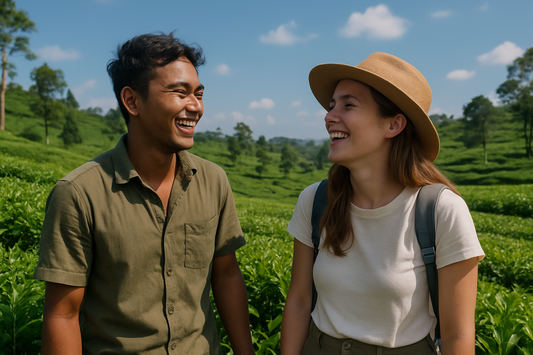This content provides an introduction to the world of tea tasting, highlighting the four primary categories of tea: white, green, oolong, and black. Each type of tea is described in detail, including its production process, flavor profile, and potential health benefits. The article also offers guidance on how to identify one's tea palate by experimenting with different teas, engaging senses, and pairing tea with food.
So you’re just getting into the vibrant and aromatic world of tea tasting! We understand! Tea is pretty awesome. Nothing beats waking up to a freshly steeped cup of tea in the morning. According to ScienceDirect, it is the second most consumed beverage in the world after water. So it’s safe to say that a lot of people drink tea.
From calming your nerves to giving you a warm and aromatic start to the day, tea is the go-to drink for a lot of health-conscious people around the globe. But if you’ve just started your quest into the fascinating world of tea tasting, it can be difficult to know where exactly to begin.
Tea has been cultivated, harvested, and consumed for thousands of years. With over 3000 varieties of tea available throughout the world today, it can feel overwhelming to find one that’s just right for you. So allow us make the process easier by guiding you through your journey.
The types of Tea
Tea is produced worldwide using various techniques and processes. According to TEABOX, there are over 1500 types of teas in the world. Fortunately for us, all 1500 types of teas can be narrowed down to basically 4 primary categories:
White Tea

The least processed of all teas, white tea is the purest form of tea you can get. Only the newest leaves are plucked and left to wither dry to produce this tea. Its name derives from the fuzzy-white hair-like substances in unopened or recently opened buds. Compared to its contemporaries, white tea production doesn’t involve any twisting, rolling, or steaming.
Read more: White Tea: How is it Different from Black Tea?
This tea is known for its soft, sweet, and delicate floral textures. So if you’re someone who enjoys fruity and floral flavors, then you should definitely try white tea. This type of tea aslo contains the most caffeine out of all the tea types. So, if you’re someone who is thinking for a coffee supplement, white tea should be on your radar. It is recommended to drink this beverage without adding any additives like milk and sugar.
Pick from our range of premium white tea here.
Green Tea
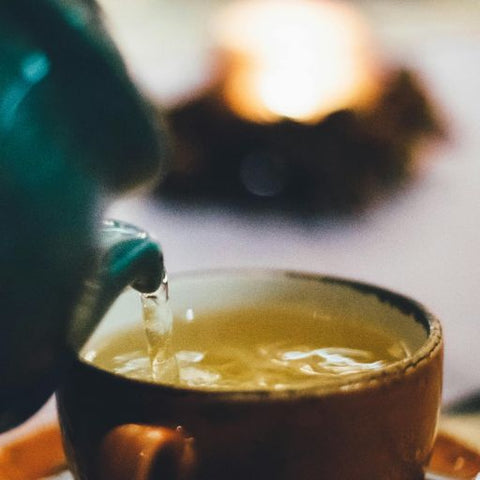
Considered the healthiest type of tea, green tea is well-regarded for its fresh and grassy taste. The initial processes involved in producing green tea are similar to those of white tea. The leaves are plucked and withered. However, after the withering process, the leaves are curled by hand, rolled into spherical shapes, and then heat-dried again. As the name implies, green tea produces a liquor with mostly green or yellow hues. There are many types of green tea that you can find in the market today. Some famous options include Jasmine, Matcha, Konacham, and Kukicha.
When you’re tea tasting green tea, you can expect flavors to range from earthy, to toasty to grassy, and have a mild-vegetable-like astringency. Green tea is popular among drinkers who are health conscious. As it is rich in antioxidants, it helps prevent chronic illnesses like cancer, heart disease, and inflammation. People also believe that it may reduce the risk of cognitive decline, as well as support bone health.
Pick from our range of premium green tea here.
Oolong Tea
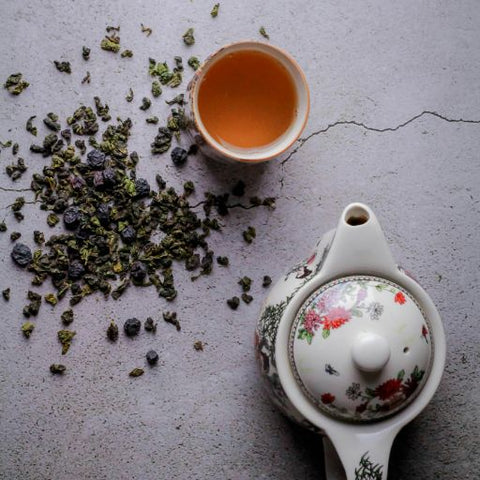
The most time-consuming type of tea to produce, Oolong tea falls between green and black tea when it comes to oxidization scales. Traditionally grown in China and Taiwan, this type of tea is plucked, rolled, and allowed to rest and oxidize for a while. Some gentle heat is also administered to slow the enzymes down. This process is repeated again and again through multiple hours and sometimes days to produce a layered and rich tea that is anywhere from 8% to 80% oxidized.
Read more: Unlocking the Secrets of Oolong Tea: A Guide to Flavor, Benefits, and Brewing
Due to this lengthy and labor-intensive process, Oolong tea has a much more complex flavor profile compared to green or white tea. This type of tea is known for its wide range of flavors ranging from dried fruits and honey to baked fruits and nutty chocolate. Its smooth, yet rich flavor profile also makes it a great option for people new to tea tasting.
Pick from our range of premium Oolong tea here.
Black Tea

Last on our list, but perhaps the most famous type of tea, black tea follows all of the same processes as the other teas on our list. However, it is allowed to oxidize more completely and none of the processes are repeated for a single batch. Black tea is completely made within a day and produces liquor with reddish or dark-brown hues. This type of tea comprises a chemical compound called Theaflavins, a type of polyphenol that reduces blood closestrol and maintains optimum heart health.
This tea also produces the strongest flavors and in some cases, the strongest astringency. It is known for its rich and mellow flavor that leaves a sustained aftertaste. Black tea is also the only type of tea that can be consumed with milk and sugar.
Black tea is known for its rich, mellow, and full flavor with a sustained sweet aftertaste, minimal bitterness, and no dryness in the throat. It has a fragrant aroma and a smooth, pure texture that lingers in the mouth, offering a comforting experience. Black tea can vary in flavor profiles, ranging from floral and fruity to malty and full-bodied, depending on the specific type and processing methods used
Like green tea, there are quite a few types of black tea that you can get your hands on. Some of the most popular options include the famous Earl Grey, and if we may be so bold, our very own Nepali Breakfast.
Pick from our range of premium black tea here.
Did you know: A little less known fact about tea is that for millennia, it was consumed as a medical drink before eventually, people accepeted it as a daily beverage.
Identifying Your Tea palate
Choosing the right tea to drink is very similar to choosing the right dish to order off the restaurant menu. Simply identify the flavors you like and find the tea that best corresponds with your preferences. Easier said than done, right? We’ve got you covered.
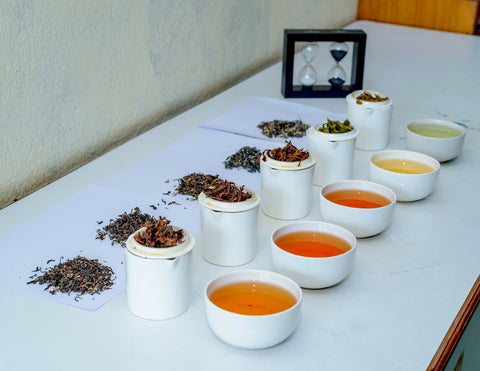
Just like everyone has different preferences when it comes to their favorite food, fashion, and sports, the same goes for teas. If you’re looking to identify your tea palate, here are three of the best ways that we recommend:
Experiment with Teas
Perhaps the best way to identify the right tea for you is simply by trying out as many teas as you can. This way, you’ll be able to narrow down the ones that best resonate with your tastebuds. You can then further narrow down your options to pick the one that you find to be the best for you. Make a note of the sweetness, bitterness, and astringency while you’re trying out the teas. While some might enjoy the light and floral notes of the gentle white tea, others might prefer the strong and brisk flavor profiles that only black tea offers.
We recommend slurping lightly as slurping too roughly or quickly can introduce too much oxygen into the tea that you have inside your mouth. Hence, altering the taste of the tea. Remember, when it comes to tea tasting, the slower - the better!
Engage your Senses
While you’re trying out teas, engage all your senses. Notice the subtle color differences of the different types of teas and inhale the vibrant aromas that rise off each warm cup. Also, pay close attention to how the tea feels in your mouth. Is the tea smooth and sweet, or do you find it bitter and astringent? This intimate experience of tea tasting can help you identify your preference quickly and accurately.
While you’re tea tasting, We recommend breathing out after each slurp. This will greatly heighten the flavors of tea on your palate. You can also disrupt the liquor with your tongue to get the full taste of the tea. Different teas leave different impressions. While some teas can leave a round and buttery aftertaste, others can leave a spiky impression that will linger for a while.
